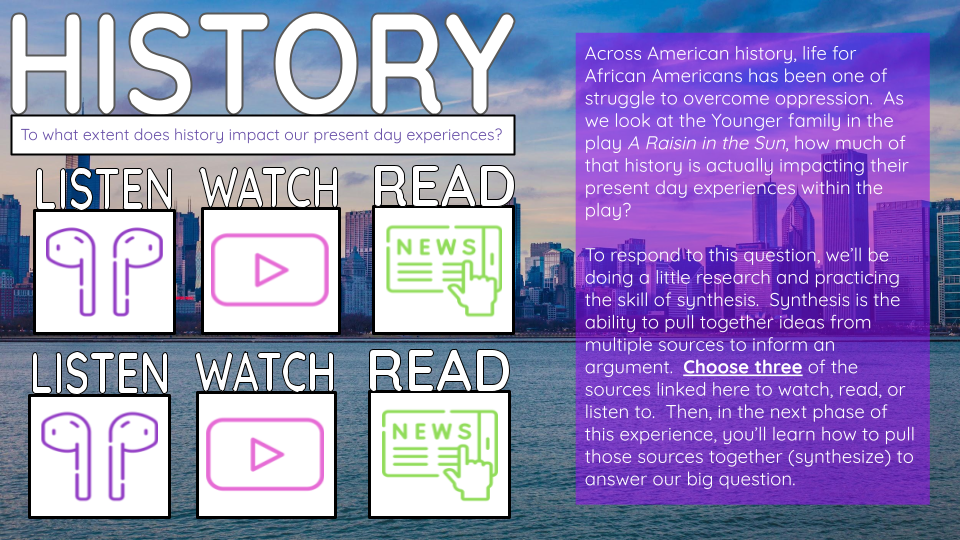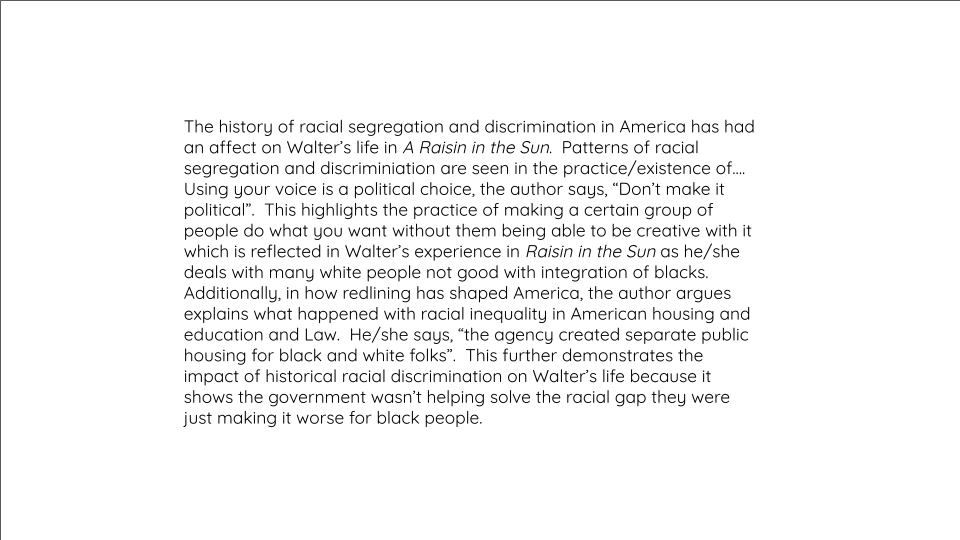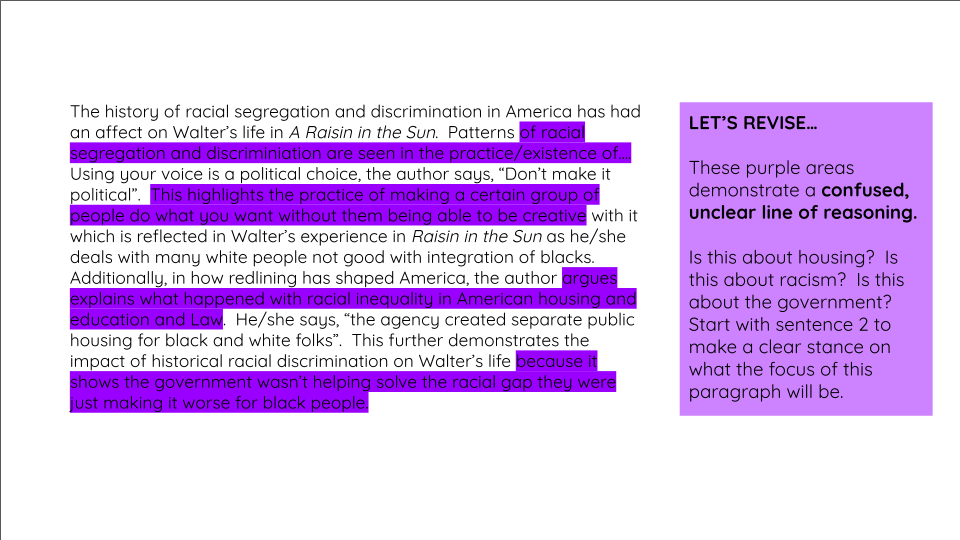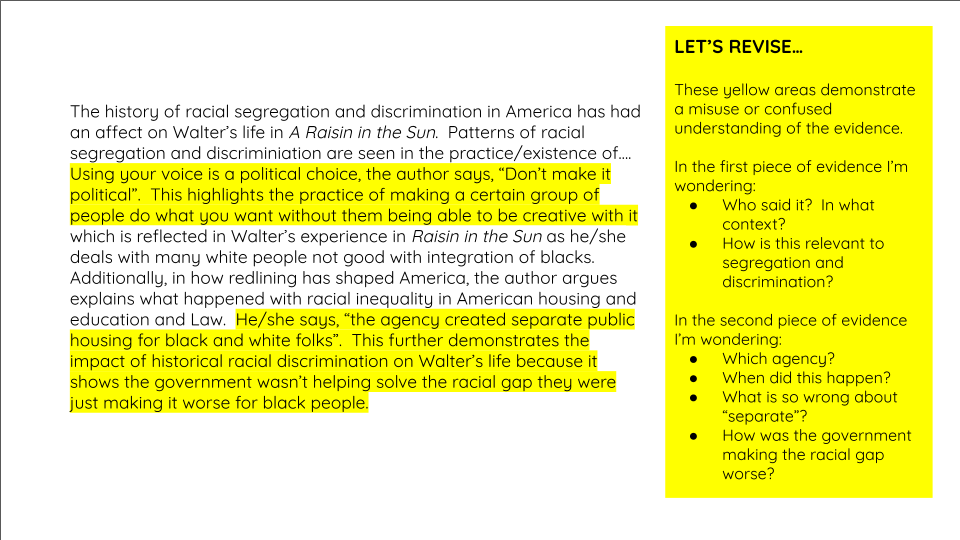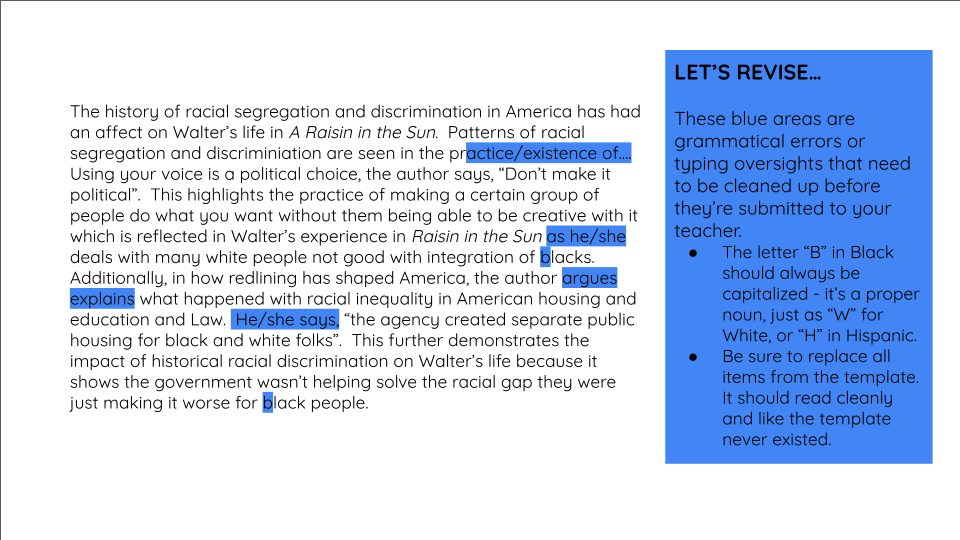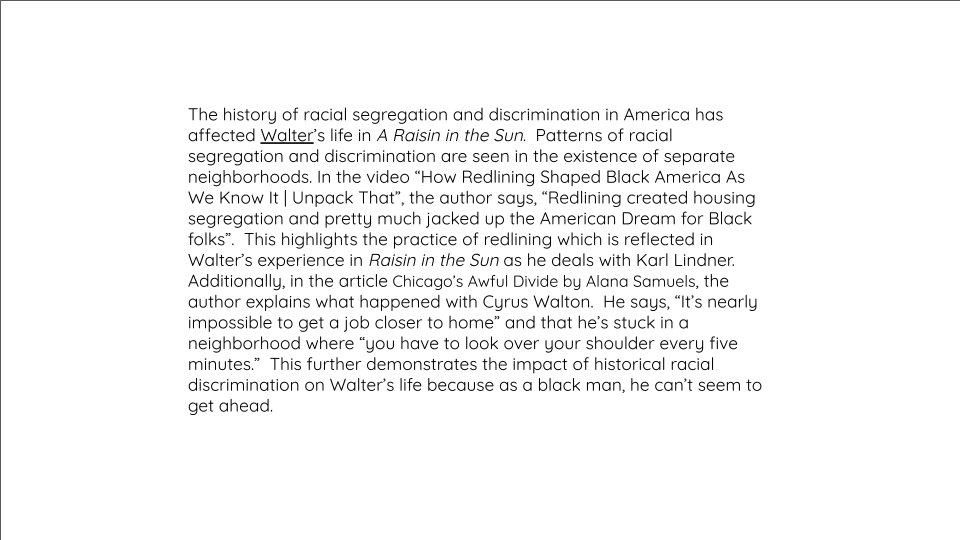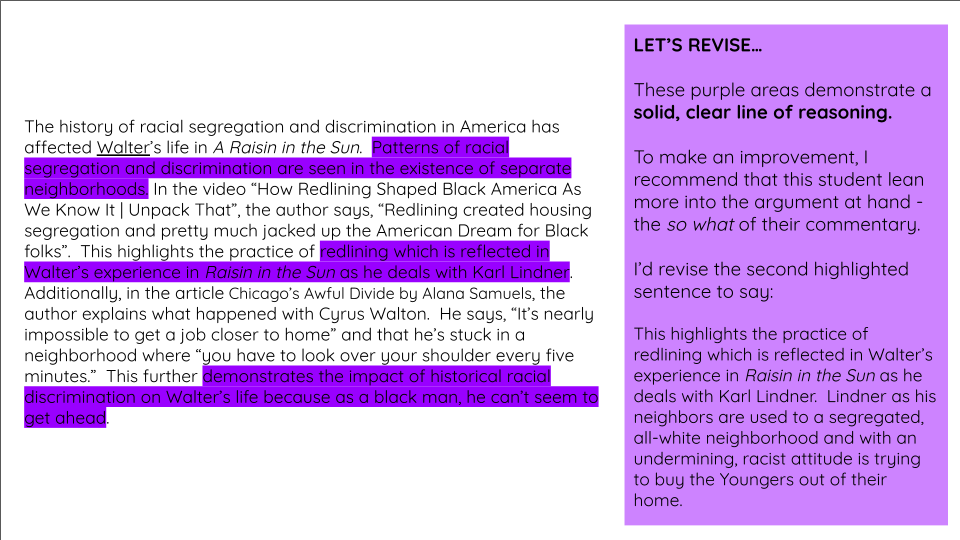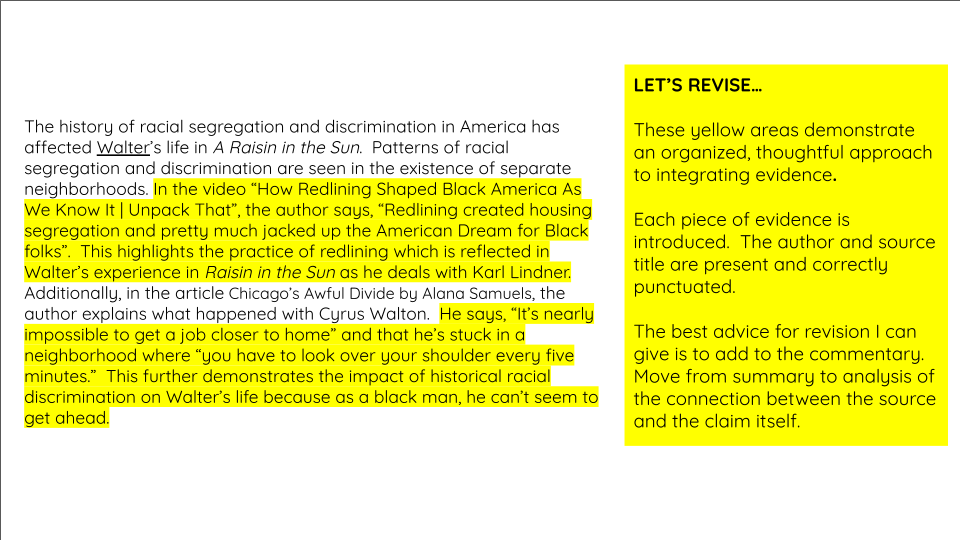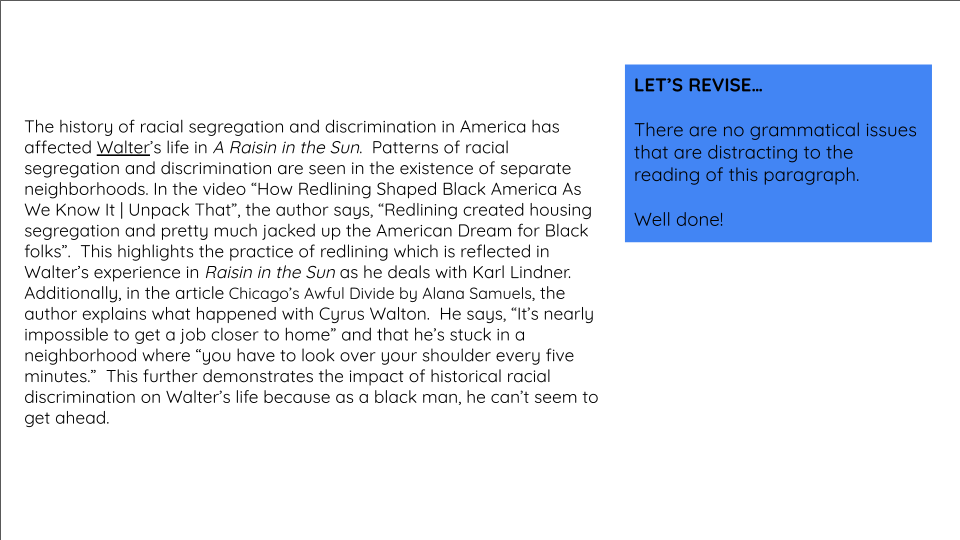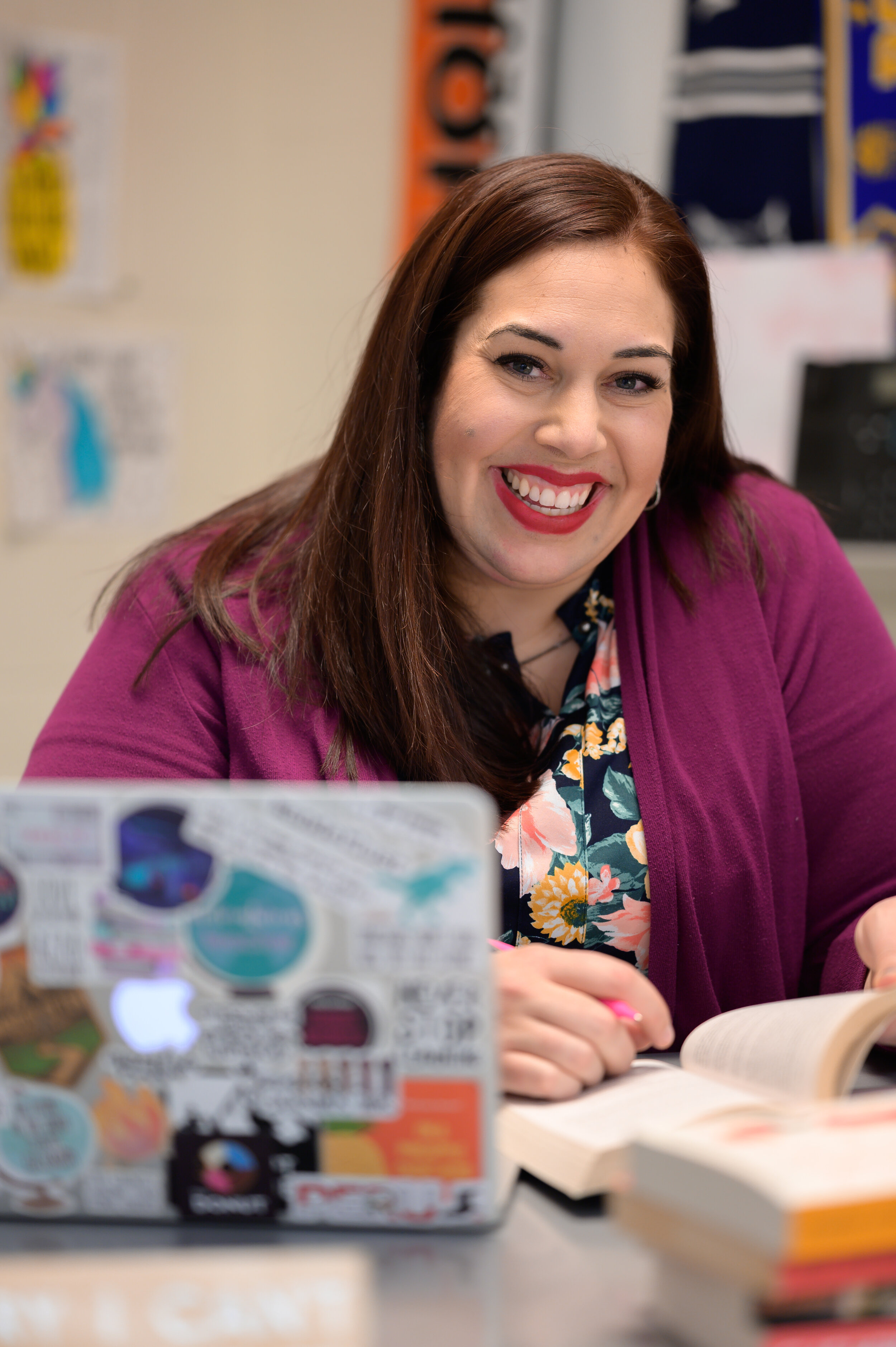Getting Started with Synthesis Writing
So much of our time in high school writing is spent focusing on analysis, that sometimes we forget about the power of synthesis. Synthesis: the act of bringing ideas, texts, and sources TOGETHER. This is a powerful skill for students to learn, especially in a digital age where misinformation spreads like wildfire. Building an argument from a variety of sources and knowing the credibility of each is an increasingly vital skill for our students to learn.
START EARLY
The skill of synthesis takes time to grow, so threading opportunities for this type of writing across a vertically aligned curriculum is a worthy undertaking for any English department. When starting with beginners, helping students understand the difference between synthesis and analysis is critical. It’s helpful to use metaphors like this:
Analysis is like examining an individual piece of a jigsaw puzzle for its colors, angles, and shapes; synthesis is the act of putting all of these pieces together
Analysis is looking at the individual parts of a photograph: the people, the landscape, the objects; synthesis is examining the photograph as a whole and how each of these parts works together
Analysis is looking at a list of symptoms in a sick patient; synthesis is making a diagnosis on how those symptoms connect to one another and the medical history of the patient
Sentence frames are also especially helpful in the beginning, as they help move students in the right direction. The early mistakes in synthesis manifest as students merely summarize all of the sources in question, rather than discuss how they work together.
When considering _____________, (Source A) suggest that ______________ while (Source B) shift the focus to ________________________.
(Source A) insists that ______________, and this is confirmed again when (Source B) says ________________.
In (Source A) it is made clear that ______________. (Source B) echoes these ideas, saying ___________________.
START SMALL
Synthesis writing activities do not have to always take the shape of huge summative writing assignments. When teaching A Raisin in the Sun, I like to pause in the middle of the play and present my students with some information about redlining and other discriminatory laws and policies at the time. Using a choice board format, I ask students to read and watch a combination of sources and to write a single body paragraph answering our EQ (essential question) based on the sources that they read.
Writing synthesis is also can be greatly aided by both informal and formal discussion practices like fishbowl and Socratic seminar. As long as students are encouraged to bring multiple sources to the table and discuss their relationship with one another, students are getting great practice before sitting down to write. Here are just a few of my favorite topics to read about and discuss:
A simple evidence tracker like this helps students sort out their sources, references, and ideas:
KEEP PRACTICING
Synthesis is a writing skill that takes repeated practice. Students will need help moving from summarizing their sources to truly synthesizing them. One of the best ways to do this is through consistent use of the same rubric and whole class feedback. The images below show two examples of student work: one that struggled to actually synthesize and another that did a good job. The highlighted portions directly identify the areas of success and struggle and are used to TEACH revision, rather than just ask for it.
How has synthesis writing been going for you in your classes? I’d love to connect with you more about this critically important skill and see what your best ideas and lessons are!
SPOTLIGHT RESOURCE:
One of the conversations that gets my students riled up, discussing and synthesizing every year is this: Does a hashtag create real social change? With a list of over 10 different sources, students read, watch, and chart the evidence for their potential claims and then we come together at the table for a riveting Socratic seminar discussing the question and its many answers. Check it out here!
ABOUT THE AUTHOR
Amanda is the author of Mud and Ink Teaching and a collaborative blogger on Teachwriting.org.
A high school English teacher of every level from ESL to AP Language, Amanda has made it her life’s work to encourage students and teachers to join her on an adventurous teaching and learning journey. Amanda is a full-time teacher author after spending thirteen years in the classroom. She writes curriculum for the high school level, coaches teachers 1:1, and travels with her family whenever possible. Amanda’s obsessed with poetry, argumentation, and showing students the power of taking chances in their writing. She is also the co-host of the podcast Brave New Teaching.
Visit Amanda on Instagram, Facebook, or Twitter for English teacher inspiration and powerful community.



